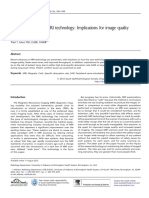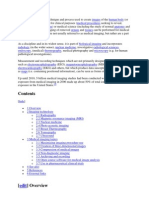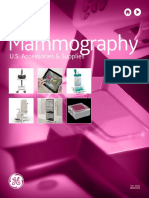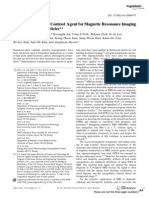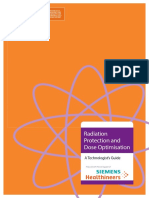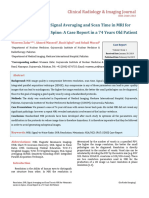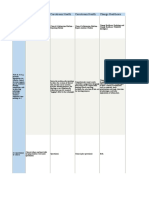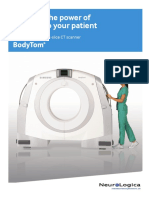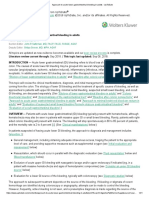Name: Score:
43 Multiple choice questions
Term 1 of 43
What is the most commonly used oral contrast media? (for X-rays and CT)
X-ray
Iodine
Barium
Calcium
Term 2 of 43
A transducer produces sound waves which are reflected (echoed) back, producing an image. What imaging
technique is this?
Ultrasonography
Ultrasound
Echocardiography
Scintigraphy
Term 3 of 43
X-ray: True or False. PA and AP are switched in what views?
Lateral
Oblique
Term 4 of 43
CT: Describe how a lung would look using a lung window setting?
0.02 msv
X-ray
Ultrasonography
Lung markings; pulmonary veins are visible.
Term 5 of 43
X-rays: Describe the plate location and the patient's body angle of a:
Right anterior oblique projection
(Tip: refer to left/right by which shoulder is on the plate)
(Tip: refer to left/right by which shoulder is on the plate)
(Tip: refer to left/right by which shoulder is on the plate)
True.
The X-ray source itself gives off very little radiation.
Term 6 of 43
Define Radio-opaque and name the imagining technique related to it
Millisieverts (msv)
X-ray Blacker = Radiolucent
X-ray
Whiter = Radiopaque
Barium
Definition 7 of 43
What are some advantages and disadvantages of Ultrasonography?
Axial (Transverse) view
What 5 things should a radiology order contain?
Sagittal view
Term 8 of 43
MRI: Describe the difference between T1 and T2 weighted images.
(Tip: refer to left/right by which shoulder is on the plate)
(Tip: refer to left/right by which shoulder is on the plate)
(Similar to X-ray images)
White - Bone or contrast
Light Grey - Organs
Dark Grey - Muscle or Fluid
Black - Gas
(Know the extremes)
Fluid color is different.
T1- Weighted: Fluid is dark
T2- Weighted: Fluid is bright
(Image: CSF is white on the T2- weighted image)
Term 9 of 43
X-rays: Describe the plate location and the patient's body angle of a:
Right posterior oblique projection
True.
The X-ray source itself gives off very little radiation.
(Tip: refer to left/right by which shoulder is on the plate)
Fluid color is different.
T1- Weighted: Fluid is dark
T2- Weighted: Fluid is bright
(Image: CSF is white on the T2- weighted image)
E. A and C
The label describes the patients side that is CLOSEST to the x-ray detector.
Term 10 of 43
Ultrasonography: If a structure is grey, it is said to be:
Hyperechoic
Hypoechoic
Anechoic
Term 11 of 43
How would you differentiate a CT scan from an MRI scan?
Fluid color is different.
T1- Weighted: Fluid is dark
T2- Weighted: Fluid is bright
(Image: CSF is white on the T2- weighted image)
Gamma camera is used to detect an injected radionuclide in the patients.
If a T2-weighted image was produced using an MRI,
Fluids in the image would appear bright.
In a CT scan, fluids would appear dark grey.
Bleeding Scan
HIDA Scan
Bone Scan
others: PET, SPECT, SBC-tagged scan(aka Indium scan)
Term 12 of 43
Ultrasonography: If a structure is black, it is said to be:
Hyperechoic
Hypoechoic
Anechoic
Term 13 of 43
A patient is standing with an X-ray source to the front and a X-ray detector on his back. Is this a PA or AP view?
Barium
X-ray
AP view
X-ray source: ANTERIOR
2 msv
Term 14 of 43
Which imaging technique is used to produce a Radiograph?
Barium
Mri
X-ray
Scintigraphy
Term 15 of 43
What is the radiation exposure (mSv) for a CT of the head?
8 msv
50 msv
2 mSv
10 gyt
Term 16 of 43
What imaging techniques can be used to produce an angiography?
Advantage: Produces functional images
Disadvantage: Poor spatial resolution (Image)
- Iodide-based
-CT
- Gadolinium-based
-MRI
CT:
CT Angiogram (CTA)
MRI:
MR Angiogram (MRA)
0.1-11 MsV
Depends on the procedure. Depending on pharmaceutical, NOT rays.
Term 17 of 43
How does nuclear imaging work?
- CT (Picture)
- MRI
- Ultrasonography
(They make SLICES)
(Tip: refer to left/right by which shoulder is on the plate)
Gamma camera is used to detect an injected radionuclide in the patients.
MRI imaging produces better soft tissue contrast than CT.
Term 18 of 43
Axial (Transverse) view
Term 19 of 43
CT: What structures do black and white colors represent in a CT scan?
Fluid color is different.
T1- Weighted: Fluid is dark
T2- Weighted: Fluid is bright
(Image: CSF is white on the T2- weighted image)
Lung markings; pulmonary veins are visible.
MRI imaging produces better soft tissue contrast than CT.
(Similar to X-ray images)
White - Bone or contrast
Light Grey - Organs
Dark Grey - Muscle or Fluid
Black - Gas
(Know the extremes)
Term 20 of 43
Which three imaging techniques are considered Tomography?
True.
The X-ray source itself gives off very little radiation.
Bleeding Scan
HIDA Scan
Bone Scan
others: PET, SPECT, SBC-tagged scan(aka Indium scan)
- CT (Picture)
- MRI
- Ultrasonography
(They make SLICES)
Lung markings; pulmonary veins are visible.
Term 21 of 43
What are three names of nuclear imaging scans?
Bleeding Scan
HIDA Scan
Bone Scan
others: PET, SPECT, SBC-tagged scan(aka Indium scan)
MRI imaging produces better soft tissue contrast than CT.
- CT (Picture)
- MRI
- Ultrasonography
(They make SLICES)
Fluid color is different.
T1- Weighted: Fluid is dark
T2- Weighted: Fluid is bright
(Image: CSF is white on the T2- weighted image)
Term 22 of 43
X-rays: Describe the plate location and the patient's body angle of a:
Left posterior oblique projection
Fluid color is different.
T1- Weighted: Fluid is dark
T2- Weighted: Fluid is bright
(Image: CSF is white on the T2- weighted image)
(Tip: refer to left/right by which shoulder is on the plate)
(Tip: refer to left/right by which shoulder is on the plate)
(Tip: refer to left/right by which shoulder is on the plate)
Term 23 of 43
A patient is standing with an X-ray source in the back and a X-ray detector on the front. Is this a PA or AP view?
X-ray
PA view
X-ray source: POSTERIOR
Ultrasonography
Barium
Term 24 of 43
What is the benefit of using an MRI over a CT?
True.
The X-ray source itself gives off very little radiation.
Bleeding Scan
HIDA Scan
Bone Scan
others: PET, SPECT, SBC-tagged scan(aka Indium scan)
MRI imaging produces better soft tissue contrast than CT.
Lung markings; pulmonary veins are visible.
Term 25 of 43
The fundamental imaging technique in nuclear medicine is called ________________
Scintigraphy
Ultrasonography
Radiography
Fluoroscopy
Term 26 of 43
For almost every body part, the radiograph (AP, PA, or oblique) is viewed as if the patient is looking at you. What
are the two exceptions?
Advantage: Produces functional images
Disadvantage: Poor spatial resolution (Image)
0.02 mSv
Ultrasonography
1. Hands, wrists, and feet are viewed as if you are looking at your own.
2. Forearms can be viewed both ways.
Term 27 of 43
Define Radio-lucent and name the imagining technique related to it
X-ray
Blacker = Radiolucent
Scintigraphy
Barium
X-ray Whiter = Radiopaque
Term 28 of 43
Most of the radiation from X-ray and CT scans are inflicted by contrast media.
True or False
True
False
Term 29 of 43
X-ray: If you have ________________ on your lateral plate, the plate will be on the ________________ of the patient.
A. left sided label, right
B. left sided label, left
C. right sided label, left
D. right sided label, right
E. A and C
F. B and D
Term 30 of 43
Coronal view
Term 31 of 43
What are the three types of resolution?
To visualize arteries, veins, and heart chamber.
CT or MRI can be used to produce an angiogram.
Spatial Resolution: High spatial resolution = Sharp image. Can be seen as 'Sharpness'.
Contrast Resolution: allows differentiation among types of tissues.
Temporal Resolution: the ability to image a structure in a narrow window of time.
Advantage: Produces functional images
Disadvantage: Poor spatial resolution (Image)
1.5 Telsa
Term 32 of 43
What is the radiation exposure (mSv) for a abdominal CT?
2 msv
10 msv
6.2msv
8 mSv
Term 33 of 43
What 5 things should a radiology order contain?
Term 34 of 43
What is the advantage and disadvantage of nuclear imaging.
2 mSv
8 mSv
0.1-11 MsV
Depends on the procedure. Depending on pharmaceutical, NOT rays.
Advantage: Produces functional images
Disadvantage: Poor spatial resolution (Image)
Term 35 of 43
What are two common IV contrast media?
0.1-11 MsV
Depends on the procedure. Depending on pharmaceutical, NOT rays.
millisieverts (mSv)
CT:
CT Angiogram (CTA)
MRI:
MR Angiogram (MRA)
- Iodide-based
-CT
- Gadolinium-based
-MRI
Term 36 of 43
What is the radiation exposure (mSv) for a PA chest radiograph?
5 msv
1 msv
14 msv
0.02 mSv
Term 37 of 43
Ultrasonography: If a structure is white, it is said to be:
Hyperechoic
Hypoechoic
Anechoic
Term 38 of 43
X-rays: Describe the plate location and the patient's body angle of a:
Left anterior oblique projection
(Tip: refer to left/right by which shoulder is on the plate)
(Tip: refer to left/right by which shoulder is on the plate)
(Tip: refer to left/right by which shoulder is on the plate)
(Tip: refer to left/right by which shoulder is on the plate)
Term 39 of 43
What is the strength of an MRI magnet?
0.02 Msv
1.54 Km/s
1.5 Telsa
99.5 Telsa
Term 40 of 43
A radiation dose is expressed in ______________.
2 msv
millisieverts (mSv)
coulomb per kilogram (c/kg)
milligray (mgy)
Term 41 of 43
What are some advantages and disadvantages of Ultrasonography?
Term 42 of 43
What is angiography used for?
To visualize arteries, veins, and heart chamber.
CT or MRI can be used to produce an angiogram.
0.1-11 MsV
Depends on the procedure. Depending on pharmaceutical, NOT rays.
1.5 Telsa
- Iodide-based
-CT
- Gadolinium-based
-MRI
Term 43 of 43
What is the range of radiation exposure (mSv) of nuclear imaginng?
0.1-11 MsV
Depends on the procedure. Depending on pharmaceutical, NOT rays.
2 mSv
Advantage: Produces functional images
Disadvantage: Poor spatial resolution (Image)
0.02 mSv
Privacy Terms English (UK)



